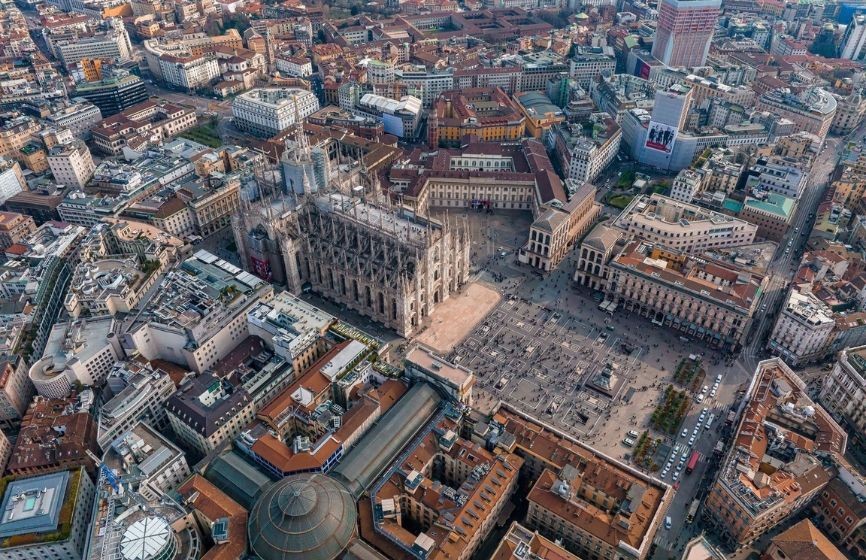Press Kit

Milano has always been Italy’s gateway to Europe and the world.
At the center of waterways and trade routes since medieval times, Milano has traditionally been Italy’s economic engine.
Milano is an affluent city with a GDP per capita of nearly €50,000. Its population of about 1.5 million swells to 3 million during daytime hours.
In recent years, Milano has become a major international tourist destination, with its three international airports (Linate, Malpensa, Orio al Serio), three major railway stations (Centrale, Garibaldi, Cadorna). The city sits at the intersection of two major highway corridors crisscrossing the EU north-south and east-west, while Paris, Zurich, Frankfurt and Munich all in easy reach by car and fast train.
Over the last ten years Milano has undergone a profound transformation, building new urban districts, two new subway lines, and the two new skylines of Porta Nuova and Tre Torri. The two main projects underway are MIND in the northwest, the new city of biotech and medical research that is being built on the Expo Area, and above all Scalo Porta Romana in the southeast, where the Olympic Village is being built for athletes of Milano Cortina 2026 Winter Olympics along with a vast park and a residential neighborhood, next to the Prada Foundation, one of Europe’s prime complexes for contemporary art.
Another development driver is the city’s knowledge economy, thanks to its four international universities (Bocconi, Bicocca, Cattolica, Politecnico) and 190,000 university students, of 12,000 come from abroad.
Today Milano is a city with style, where business and leisure, sports and culture can be reconciled as in no other city around the globe.
Milano is a city composed of diverse and distinctive neighborhoods, which surround the historic city center in a succession of social identities and functions. For example, Ticinese with its Roman columns and Navigli with its Medieval canals offer much-appreciated hangouts to Milanese and out-of-town youth. At the city’s east, Porta Venezia is the home of LGBTQ bars and cuisine from the Horn of Africa. In the city’s north, Isola tends to be liked by people that are into alternative crafts and culture, while Porta Romana, in the city’s south, is appreciated by foodies and students. Then there’s Chinatown, and artsy NoLo and that’s just the beginning of it.
 Welcome to Milano - pdf 168.35 KB
Welcome to Milano - pdf 168.35 KB  Milano, city of Neighborhoods - pdf 198.96 KB
Milano, city of Neighborhoods - pdf 198.96 KB 
 Log in
Log in